- Pakistan hits back at India’s ‘recycled lies’ on Kashmir at UN samaa tv
- ‘Worst violator’: India slams ‘highly hypocritical’ Pakistan at UN; calls out killings in Afghanistan Times of India
- Fountainhead Of Terror: Why India Blasts Pakistan…
Blog
-
Pakistan hits back at India’s ‘recycled lies’ on Kashmir at UN – samaa tv
-
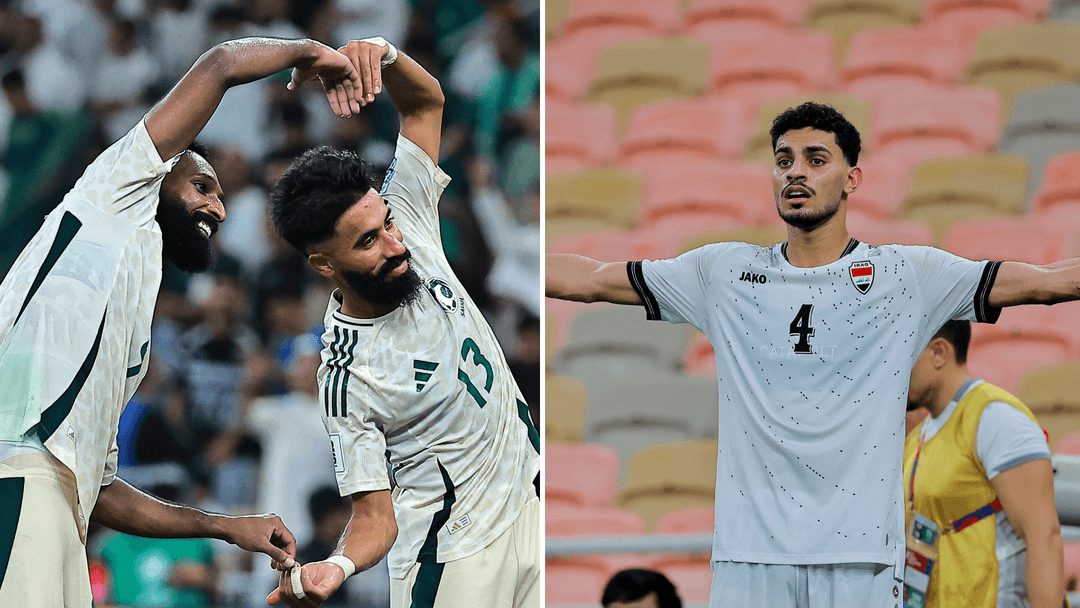
Saudi national team ready for Iraq in Final Group B AFC playoff qualifying match
– Advertisement –
– Advertisement –
– Advertisement –
Jeddah, Oct 14 (SPA/APP): The Saudi national football team held its final training on Monday ahead of Tuesday’s match against Iraq at King Abdullah Sports City in Jeddah, the final Group…
Continue Reading
-
Ancient microbes thawed from Alaskan permafrost after 40,000 years – Mid-day
- Ancient microbes thawed from Alaskan permafrost after 40,000 years Mid-day
- Scientists ‘reawaken’ ancient microbes from permafrost — and discover they start churning out CO2 soon after Live Science
- Ancient Alaska microbes’ thaw helps…
Continue Reading
-
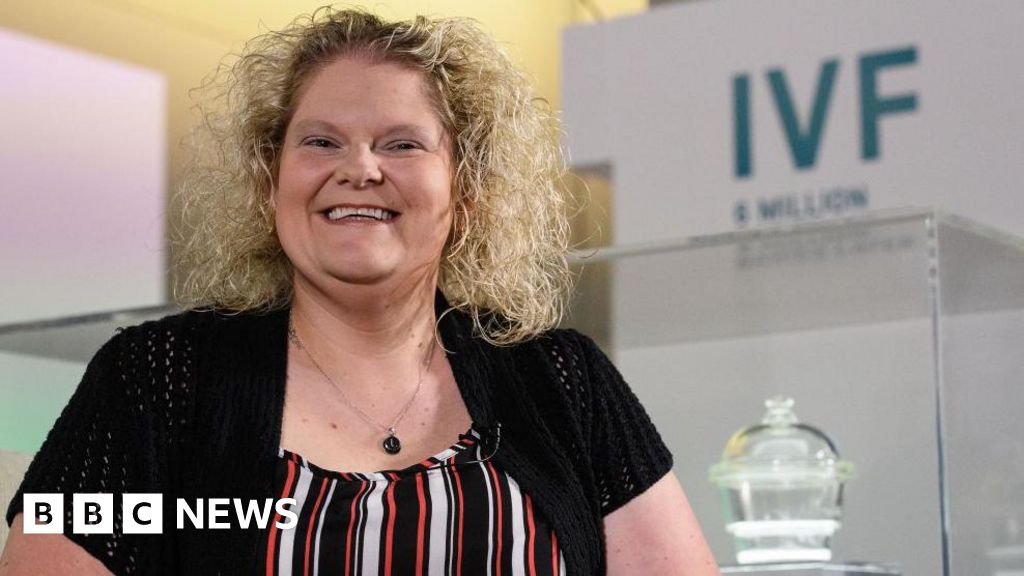
World’s first IVF baby backs fertility mission as global birth rates fall
Sammy JenkinsWest of England
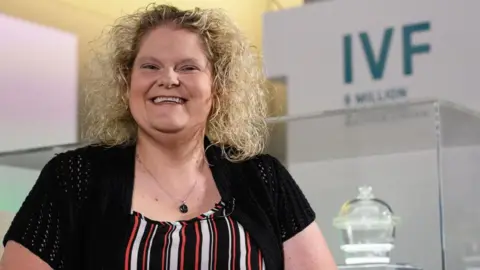 Leon Neal/Getty Images
Leon Neal/Getty ImagesLouise Brown was the first to be born via IVF in 1978 The world’s first IVF baby has given her backing to an international fertility care campaign.
Louise Brown, 47, from Bristol, was the first in the world to be born via in vitro fertilisation (IVF) at Oldham General Hospital on 25 July 1978.
Ms Brown is now working with the International Federation of Fertility Societies (IFFS) on their More Joy campaign, a movement pushing for affordable, fair and accessible fertility care globally.
“In my school days, sex education lessons were all about avoiding pregnancy. This initiative is teaching people how to build healthy families and protect their fertility,” Ms Brown said.
Ms Brown said she was “really proud” to be supporting the campaign and her experience of travelling to reproductive health conferences internationally has allowed her to see “first hand” how fertility treatments can “make a real difference” to falling birth rates”.
In June, Dr Natalia Kanem, head of the United Nations Population Fund (UNFPA), said world fertility rates were in an “unprecedented decline”, due to a number of factors, including the prohibitive cost of parenthood.
Surveying 14,000 people in 14 countries about their fertility intentions, the UNFPA found one in five people haven’t had or expect they won’t have their desired number of children.
In total, 12% cited infertility – or difficulty conceiving – as a reason for not having the number of children they wanted.
However, the figure was higher in some countries including Thailand (19%), the US (16%), South Africa (15%), Nigeria (14%) and India (13%).
Meanwhile, In 2024, figures from the Office for National Statistics showed the lowest fertility rate on record in England and Wales, with women having on average of 1.44 children between 2022 and 2023.
‘Support they need’
IFFS president Marcos Horton said the organisation, which was established in 1968 and brings together fertility specialists worldwide, said while “fertility is a fundamental part of human health”, many “face barriers in accessing care”.
He said the campaign aims to “make fertility care more accessible and equitable, while also educating people about infertility prevention and healthy family planning”.
“With ambassadors like Louise, we can raise awareness internationally, influence policy, and ensure that more people have the support they need to start a family when they are ready,” he added.
Continue Reading
-
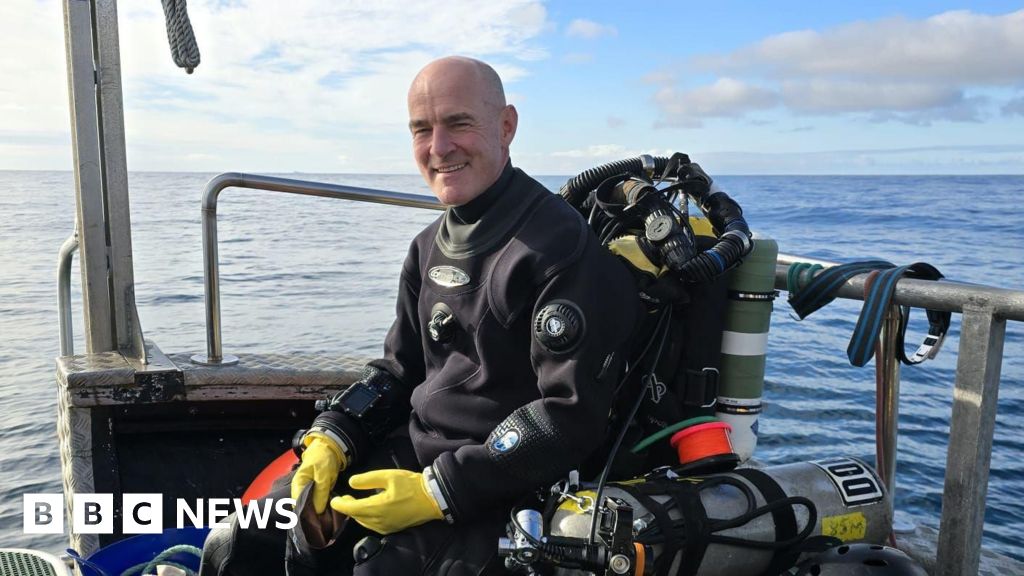
Diver thought to have identified wreck of steamship lost in 1869
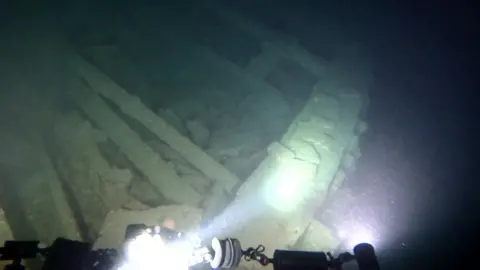 DeepWreckDiver/Youtube
DeepWreckDiver/YoutubeDominic Robinson explored the wreck last September A deep-sea diver believes he has solved the mystery of a cargo vessel which disappeared more than 150 years ago.
Dominic Robinson, from Plymouth, said he discovered crockery…
Continue Reading
-
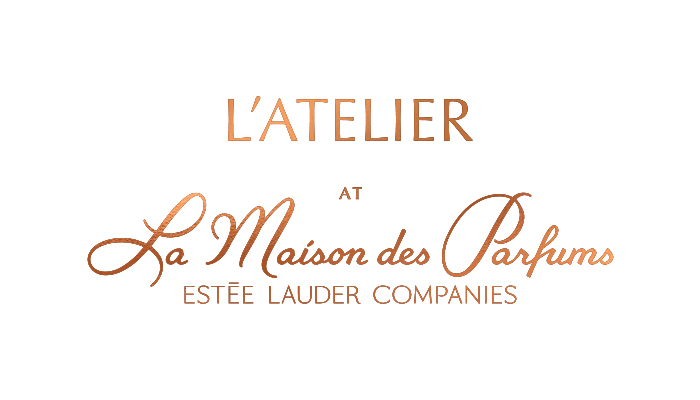
The Estée Lauder Companies Opens Global Fragrance Atelier in Paris, Accelerating Next-Generation Innovation in Perfume Artistry
PARIS –(BUSINESS WIRE)–
The Estée Lauder Companies Inc. (NYSE:EL), under the High Patronage of Mr. Emmanuel Macron, President of the French Republic,today announced the opening of its Fragrance Atelier within its new La Maison des Parfums on Rue Volney inParis . This newly established global innovation hub is fully dedicated to world-class fragrance expertise, advanced technologies and cutting-edge capabilities, and will accelerate the company’s strategic ambitions in luxury and prestige fragrances. Rooted in the legacy of Mrs. Estée Lauder’s pioneering vision and her lifelong passion for fragrance, the Atelier’s opening marks a significant milestone in the company’s longstanding commitment to fragrance excellence and craftsmanship.This press release features multimedia. View the full release here: https://www.businesswire.com/news/home/20251013447078/en/
The Exterior of La Maison des Parfums
“It is with great pride and excitement that we open our Fragrance Atelier in Paris,” said Stéphane de La Faverie, President and Chief Executive Officer, The Estée Lauder Companies. “Building on our incredible heritage of creativity and innovation, the Atelier will propel our future growth in this dynamic category — uniting world-class expertise, cutting-edge technology, and the artistry of fragrance to accelerate innovation across our portfolio. Located in the cradle of perfumery, our teams will blend state-of-the-art technology, data-driven intelligence, and olfactive expertise to craft the next generation of extraordinary scents for our consumers worldwide.”
“The Fragrance Atelier is an exciting new model for creation — a space that harnesses creativity and science to shape the future of fragrance,” said René Lammers, The Estée Lauder Companies’ Chief Research & Innovation Officer. “This hub brings together experts from across our fragrance brands and partners in an environment purpose-built for experimentation. Together, they will accelerate the journey from inspiration to formulation and ultimately to the final consumer experience.”
A Bold Addition to The Estée Lauder Companies’ Innovation Network
The Atelier further enhances The Estée Lauder Companies’ global research and innovation network across
the United States (New York andMinnesota ),China (Shanghai ),Europe (Belgium ), andCanada (Toronto ). Together, these sites seamlessly integrate category- and region-specific strengths to drive breakthrough discovery across the full spectrum of beauty. The Atelier introduces an AI-enabled, end-to-end creation process that combines olfactive and neuroscience modeling with real-time monitoring of patents, research, and regulations. These resources will accelerate discovery, develop new technologies, fuel experimentation, and enable faster response to evolving consumer trends, reducing fragrance development lead times by up to 30–50% in the coming years.A Transformative Space Custom Built for Fragrance Innovation
Inside the Atelier, specialized co-creation and innovation spaces bring artistry and science to life. In the Music Room, perfumers from leading fragrance houses and brand teams collaborate to compose signature accords and explore new olfactive territories. In the adjoining laboratories, experts use CO₂ supercritical extraction, GCMS molecule analysis, and AI-driven sillage measurement to understand fragrance structure and longevity at the molecular level. Proprietary neuroscience-based consumer modeling transforms sensory data into insight, helping creators design fragrances that stir emotion and inspire desire.
Serving as a shared innovation engine for all fragrance brands within the company’s portfolio, the Atelier accelerates collaboration and discovery across Jo Malone London, TOM FORD, Le Labo, KILIAN
PARIS , and Editions de Parfums Frédéric Malle, as well as across Estée Lauder, Clinique, AERIN Beauty, Aramis, and BALMAIN Beauty fragrances. Each brand retains its distinctive voice while drawing on shared access to next-generation technology, proprietary ingredients, and scientific expertise.Located in the heart of
Paris , La Maison des Parfums unites the company’s fragrance, creative, and innovation teams within a five-story, 2,000-square-meter space that blends French craftsmanship with modern design. Its architecture evokes the composition of a fragrance — travertine as the base, artisanal details as the heart, and light-infused finishes as the top note — creating an immersive environment where heritage and innovation coexist in harmony.Deepening The Estée Lauder Companies’ Commitment to
France The Atelier’s opening underscores The Estée Lauder Companies’ enduring commitment to
France , a country whose strong culture of innovation and investment continues to make it a vital strategic market and creative hub for the company. The company’s presence inFrance spans nearly six decades, beginning with its first French office in 1966. Today,Paris serves as the location for the company’s EUKEM regional headquarters, a newly created geographic cluster encompassingEurope , theUnited Kingdom andIreland , and emerging markets inAsia ,Africa and theMiddle East , as well as the headquarters of the company’s French sales affiliate.The Estée Lauder Companies employs more than 1,200 people in
France and proudly operates the global headquarters of several of its brands there, including KILIANPARIS , Editions de Parfums Frédéric Malle, Darphin Paris, and Lab Series. The establishment of La Maison des Parfums and the Fragrance Atelier builds on this foundation, further connecting the company to France’s world-renowned ecosystem of perfumers, suppliers, and creative talent.“We are extremely proud that The Estée Lauder Companies has chosen
France as the location for its new Fragrance Atelier — an innovative project announced at the most recent Choose France summit,” said Pascal Cagni, French Ambassador for International Investments and Chairman of the Board of Business France. “Their choice demonstrates the confidence that international leaders have in French excellence, which is driven by a unique ecosystem of creative talent, innovation, and globally recognized expertise. The French perfume and cosmetics industry, with more than €30 billion in revenue, is a key driver of growth and attractiveness. The Estée Lauder Companies’ Fragrance Atelier is a perfect demonstration of France’s ability to offer companies an environment conducive to the development of their most ambitious projects. I commend the remarkable work of the Business France teams which enablesFrance to remain at the forefront of the global perfume industry.”Cautionary Note Regarding Forward-Looking Statements
Statements in this press release may constitute forward-looking statements within the meaning of the Private Securities Litigation Reform Act of 1995. Such statements include those in the various quotations. Although the Company believes that its expectations are based on reasonable assumptions within the bounds of its knowledge of its business and operations, actual results may differ materially from the Company’s expectations. Factors that could cause actual results to differ from expectations include the ability to successfully implement the Company’s strategy, including Beauty Reimagined and the profit recovery and growth plan; successfully transition its leadership; and those other factors described in the Company’s filings with the Securities and Exchange Commission, including its most recent filings with the Securities and Exchange Commission. The Company assumes no responsibility to update forward-looking statements made herein or otherwise.
About The Estée Lauder Companies
The Estée Lauder Companies Inc. is one of the world’s leading manufacturers, marketers, and sellers of quality skin care, makeup, fragrance, and hair care products, and is a steward of luxury and prestige brands globally. The company’s products are sold in approximately 150 countries and territories under brand names including: Estée Lauder, Aramis, Clinique, Lab Series, Origins, M·A·C, La Mer, Bobbi Brown Cosmetics, Aveda, Jo Malone London, Bumble and bumble, Darphin Paris, TOM FORD, Smashbox, AERIN Beauty, Le Labo, Editions de Parfums Frédéric Malle, GLAMGLOW, KILIAN
PARIS , Too Faced, Dr.Jart+, the DECIEM family of brands, including The Ordinary and NIOD, and BALMAIN Beauty.View source version on businesswire.com: https://www.businesswire.com/news/home/20251013447078/en/
Media Relations:
Lauren Pratapas
[email protected]Investor Relations:
Rainey Mancini
[email protected]Source: The Estée Lauder Companies Inc.
Continue Reading
-

Saturn’s moon Mimas may hide young ocean below its icy surface
– Advertisement –
– Advertisement –
– Advertisement –
ISTANBUL, Oct 14 (AA/APP): Saturn’s small, cratered moon, Mimas, may secretly harbor a young subsurface ocean — a finding that could reshape how scientists define ocean worlds in the…
Continue Reading
-

Clinical application of muscle energy technology for knee function rec
Total Knee Arthroplasty (TKA) is an orthopedic surgical procedure that replaces a damaged human joint with a prosthesis made of artificial materials. TKA aims to alleviate joint pain, instability, deformities, and severe functional impairment caused by various types of arthritis, traumatic arthritis, and non-pyogenic arthritis, thereby reconstructing a joint with near-normal functionality and enhancing joint performance. Recognized as the safest and most effective treatment for alleviating pain and improving limb function in patients with knee arthritis, the utilization of TKA has been on a steady rise, increasing annually by 5% to 17%.1 However, systematic reviews indicate that only 3 randomized controlled trials (RCTs) with a total sample size of less than 100 participants have evaluated the efficacy of MET in post-TKA rehabilitation. These studies suggest limited evidence regarding the efficacy of MET post-TKA, warranting further investigation into its impact on functional recovery. Despite undergoing TKA, many patients still experience suboptimal functional recovery, which is primarily characterized by persistent postoperative pain, joint stiffness, and limited ability to perform daily activities.2–4 Conventional rehabilitation methods have not significantly improved postoperative knee joint mobility, possibly due to early postoperative symptoms like pain and swelling.4 Hence, with the increasing number of patients undergoing TKA (growing annually by 5–17%), implementing effective early rehabilitation training is crucial for enhancing postoperative knee joint function and improving the quality of life for TKA patients.
Muscle Energy Technique (MET) is a manipulative treatment targeting disorders of the soft tissues, muscles, and skeletal system. It involves precise therapist-controlled direction and force application, coupled with active patient participation, utilizing isometric muscle contractions to mitigate pain, stretch tight muscles and fascia, reduce muscle rigidity, improve local blood circulation, strengthen weak muscles, and increase mobility in stiff joints. Common MET techniques include Reciprocal Inhibition (RI), Contract Relax (CR), Contract Relax Antagonistic Contraction (CRAC), and Annulare Muscle Energy Technique (A-MET), each serving distinct purposes. For instance, RI primarily relaxes agonist muscles through the active contraction of antagonist muscles, thereby increasing joint Range of Motion (ROM) and reducing adhesions in joints, ligaments, and fascia. CR involves isometric contraction of the agonist muscle, causing tendon tissues to stretch, passively elongating and alleviating abnormal collagen tissue adhesions, thereby releasing collagen in tendons and facilitating more freedom in muscle fiber contraction and extension, along with enhanced mobility in the connected fibrous tissue.5
MET has gained widespread recognition in global fields of rehabilitation medicine, rehabilitative therapy, and sports rehabilitation. Its primary treatment targets include individuals with sports injuries, post-traumatic injuries from traffic accidents, chronic injury-related pain complications, and patients with limb joint functional impairments. As China’s aging population grows, the incidence of knee arthritis is also increasing and is expected to continue to rise significantly. However, the effectiveness of existing post-TKA rehabilitation methods in China is inadequate for achieving rehabilitation goals. This study challenges traditional rehabilitation approaches by incorporating novel rehabilitation techniques. By comparing the effects of conventional rehabilitation methods (Routine Rehabilitation Treatment, RRT) and Muscle Energy Technique (MET) on knee joint functional rehabilitation in post-TKA patients, the study explores the impact of MET on functional recovery and long-term prognosis in these patients. The findings not only optimize the rehabilitation treatment pathway, providing more effective rehabilitation methods for TKA patients, but also align with the current objectives of “Healthy China 2030”, playing a significant role in improving postoperative functional recovery and the quality of life for patients.
Clinical Data and Methodology
Baseline Data Patient Records
The study selected 80 patients who underwent Total Knee Arthroplasty (TKA) between January 2021 and December 2021 at the Department of Orthopedics, The First Affiliated Hospital of Nanjing Medical University. All procedures were performed by the same team of doctors, utilizing prostheses of the same material provided by the same company, and followed a uniform postoperative treatment protocol.
Sample Size Calculation
Based on ROM data (α=0.05, β=0.2), A sample size of 36 patients per group was required to achieve adequate statistical power, with 40 patients enrolled per group to account for potential dropout. The actual study included 36 patients in the MET group and 42 patients in the RRT group, which was slightly different from the planned 36/group.
Inclusion Criteria
a. Patients diagnosed with osteoarthritis undergoing unilateral Total Knee Arthroplasty; b. Patients undergoing Total Knee Arthroplasty for the first time; c. Patients aged between 50 and 80 years; d. Patients with good compliance, capable of participating in functional exercises; e. Patients willing to participate in the study, agree to follow-up appointments, and provide signed informed consent.
Exclusion Criteria
a. Patients with a history of knee surgery or rheumatoid arthritis; b. Patients with concurrent lower limb acute infection or other joint functional impairments; c. Patients with preoperative coagulation disorders or lower limb Deep Vein Thrombosis (DVT); d. Patients with consciousness, cognitive impairments, or severe mental illness. Elimination Criteria: a. Patients who need to discontinue the treatment plan for personal reasons; b. Patients who experience severe adverse reactions and are unable to adhere to the set treatment plan; c. Patients who withdraw from the clinical study midway; d. Patients who fail to attend scheduled clinic follow-ups, resulting in incomplete follow-up or assessment data.
Research Methodology
Prospective data collection was performed from January 2021 to December 2021, involving 80 patients who met the inclusion and exclusion criteria and underwent TKA at our facility. Block randomization (size=4) via opaque envelopes was employed to allocate patients into two groups. A computerized random number sequence was generated, and the allocation sequence was concealed in opaque, sequentially numbered envelopes. The assessors, who were blinded to group allocation, opened the envelopes according to the patient’s hospital admission order, ensuring a randomized and blinded assignment. The patients, in accordance with their hospital admission order, opened these envelopes and were subsequently randomly assigned to either the Muscle Energy Technique (MET) rehabilitation group or the conventional rehabilitation group.
The conventional rehabilitation treatment methods for the control group are as follows: Preoperative rehabilitation assessment, including the evaluation of muscle strength, Range of Motion (ROM), and circumference of different parts of the operative limb. Development of a rehabilitation plan based on the assessment results, which includes ankle pump dorsiflexion and plantarflexion exercises, muscle strength training, joint ROM exercises, gait training, and Activities of Daily Living (ADL) training. Muscle strength training, encompassing quadriceps muscle strength training, hamstring muscle strength training, and straight leg raise exercises. Each exercise is held for 10 seconds, with 20 repetitions per set and two sets conducted daily. Joint ROM exercises, involving both active and passive knee flexion exercises. Each exercise is held for 5 seconds, with 20 repetitions per set and two sets conducted daily. Gait training, which includes guidance on how to perform body position transitions, stand up from the ground, and walk correctly using a walker, all within the first 24 hours post-surgery. Rehabilitation evaluation, assessing the patient’s muscle strength, joint ROM, gait, walking distance, and ADL status after undergoing the rehabilitation training. The Muscle Energy Technique (MET) intervention rehabilitation treatment methods specifically implemented in the experimental group include:
The MET intervention comprised 2 sessions per day for 6 consecutive days during inpatient rehabilitation, followed by 3 sessions per week for 8 weeks during outpatient rehabilitation. Specifically, the intervention included Post-Isometric Relaxation (PIR) and Post-Facilitation Stretch (PFS) techniques to target the quadriceps muscle. These techniques aim to enhance neuromuscular activation by engaging Type II muscle fibers and improving the extensibility of antagonist muscles, ultimately leading to enhanced knee extension function. The specific implementation is as follows: The patient lies supine with the knee passively flexed to 15 degrees. The patient is instructed to perform isometric contractions of the quadriceps against resistance, followed by relaxation, then the therapist rapidly stretches to the next resistance point. Each quadriceps isometric contraction lasts 10 seconds, performed 10 times per set, with one stretch after completing a set and two sets per day. After each stretch, the knee extension angle is remeasured to maximize the improvement of knee extension limitations. Once the patient’s knee joint can fully extend, they are guided through regular muscle strength training, including isometric contractions of the quadriceps, assessing the strength of medial muscle contractions, ensuring proper contraction and relaxation of key muscles, straight leg raise exercises, active knee flexion exercises, and bedside passive knee flexion exercises. The training starts on the second day post-TKA and continues for six consecutive days until discharge, aiming to achieve full knee extension and mastery of the isometric contraction technique of the quadriceps. Eccentric contraction of the quadriceps combined with conventional straight leg raise training, which further strengthens the muscle strength of the knee extensors, activates the power of the quadriceps, particularly the strength of the vastus medialis muscle. This approach ensures more coordinated contraction within the different muscles of the quadriceps, laying the foundation for the completion of straight leg raise exercises. The specific implementation is as follows: The patient is guided to sit at the edge of the bed, actively extending the knee, then, under the therapist’s control, passively flexing the knee to 60 degrees. The patient exerts force toward the resistance point in the direction of stretch, and the therapist provides single-handed equal resistance (isometric contraction) or uses a sequential progressive resistance. The patient is instructed to extend the knee (isotonic contraction), activating the quadriceps muscle. The therapist rapidly stretches to the next resistance point, the patient extends the knee again, and the therapist observes the contraction response, especially in the position of the vastus medialis muscle, to ensure the quadriceps are in an activated state. Each resistance contraction lasts 5 seconds, followed by one stretch, repeated 10 times per set, with two sets per day. The training begins on the second day post-TKA and continues for six consecutive days until discharge. The goal is to correctly master the force application method of the adductor muscles of the thigh, activate the quadriceps early, and complete the straight leg raise training regimen.
Conventional Range of Motion (ROM) training followed by Reciprocal Inhibition (RI) technique (knee flexor muscle training) effectively stimulates the electrical response rate of knee flexor muscles and induces neuromuscular activation. This method also alleviates pain through reciprocal inhibition and stimulation of mechanoreceptors. The specific implementation is as follows: Before starting the therapy, the patient is seated at the edge of the bed with the thigh snug against the bed edge and the leg dangling. The therapist, facing the patient, stabilizes the operative thigh with one hand and places the other hand under the distal end of the affected calf. The patient is instructed to take deep breaths; if the thigh muscles of the operative limb are tense, they are gently tapped to induce relaxation. The patient is then guided to actively flex the knee for 5 seconds. Simultaneously, the therapist, while seated, places a hand on the patient’s posterior ankle, providing equal resistance against the patient’s hamstring muscle contraction. After maintaining the knee flexion resistance for 5 seconds, the therapist relaxes the pressure. When the patient’s muscles are balanced and coordinated, the therapist continually advances the joint’s range of motion until the highest resistance point of knee flexion is reached. Each resistance contraction lasts 5 seconds, with the joint’s range of motion advanced once. This is performed 10 times per set, with two sets per day. The training begins on the second day post-TKA and continues for six consecutive days until discharge. The objective is to correctly master the hamstring muscle’s force application method, activate the hamstring muscle early, and successfully complete the active knee flexion training regimen.
Observation Indicators
Knee Joint Active Range of Motion
The goniometer is used to measure the active range of motion of the patient’s knee joint, including the flexion angle in the supine and sitting positions, and the extension angle in the sitting position. Each movement is measured twice, and the best value is taken. Measurements are taken at 3 days, 7 days, 1 month, and 3 months, with a planned follow-up at 6 months.
Time Up and Go Test (TUG)
Initially, the patient sits on a chair 45 cm high. Timing starts when the patient stands up, walks 3 meters, turns, returns to the chair, and sits down again. The total time taken for this process is recorded. This scale is simple, easy to operate, and has high reliability and validity, making it suitable for evaluating short-term and long-term rehabilitation effects post-knee arthroplasty.1 The TUG test is performed and recorded 7 days and 1 month postoperatively.
Hospital for Special Surgery (HSS) Knee Score
The HSS knee scoring system, proposed by the Hospital for Special Surgery in the USA, includes six dimensions: pain, function, range of motion, muscle strength, knee flexion deformity, and knee instability. Each question has five multiple-choice options, with the scores converted to a 100-point scale, where 0 points indicate the most severe symptoms, and 100 points indicate the least severe. The HSS knee scores are recorded 1 month and 3 months postoperatively.
Visual Analogue Scale for Pain (VAS)
A 10 cm ruler is used, divided into ten equal parts, with the ends labeled “0” and “10”, representing no pain and unbearable extreme pain, respectively. The middle part of the scale corresponds to the respective pain levels. Subjects assess their pain level based on their sensation and mark it on the appropriate scale. VAS scoring criteria: 0–2 points are considered “excellent”, 3–5 points “good”, 6–8 points “fair”, and 8–10 points “poor”. VAS pain scores are recorded at 3 days, 7 days, 1 month, and 3 months postoperatively.
Statistical Methods
All clinical research data are recorded in a standardized observation chart created with Microsoft Excel and are managed by a dedicated person responsible for clinical data. Analysis is conducted using SPSS software version 22.0. For comparing quantitative data between two groups, repeated-measures ANOVA was employed to account for time-related effects and group differences. Paired-sample t-tests were utilized to compare pre- and post-treatment outcomes within each group, with a significance level set at P < 0.05. All measurement data should fit a normal or approximately normal distribution and are presented as mean ± standard deviation. The independent samples t-test is used for analyzing the aforementioned indicators, with P < 0.05 considered statistically significant.
Results
MET Significantly Enhances Patients’ Knee Joint ROM
The range of motion (ROM) of the knee joint can reach 135 degrees during flexion and 0 degrees during extension, with internal and external rotation angles being approximately 10 degrees each. Limited joint mobility may be a result of knee injuries or degeneration. When the quadriceps muscles are weak, complete extension of the knee joint is not possible. This study compared the intergroup effects, time effects, and interaction effects on the ROM of the knee joint post-TKA between the two patient groups. As indicated in Table 1, the experimental results were statistically significant (P < 0.001). The results of the repeated-measures ANOVA demonstrated that, over time, the active ROM of the knee joint in the experimental group was significantly superior to that in the control group (P < 0.001). Notably, on the third day post-surgery, the knee joint activity degree of the patients in the experimental group was 19.3% higher than that in the control group. These results suggest that, compared to conventional rehabilitation methods, the rehabilitation treatment utilizing MET can significantly improve the ROM of the knee joint in patients post-TKA (Figure 1).
Table 1 Comparison of Active Range of Motion Scores of the Knee Joint Between Two Groups of Patients (
 , Degrees)
, Degrees)
Figure 1 Comparison results of ROM (Range of Motion) between the two groups of patients.
MET Does Not Improve Patients’ TUG Scores
This study compared the Time Up and Go (TUG) test scores post-TKA between the two patient groups, and the experimental results are presented in Table 2. The data reveal that there was no significant difference in the TUG scores between the two groups one month post-surgery (P > 0.05), indicating no statistical significance. However, the TUG scores three months post-surgery were statistically significant (P < 0.001), with the scores of the Routine Rehabilitation Treatment (RRT) group being higher than those of the MET group. These results suggest that, compared to conventional rehabilitation methods, the MET rehabilitation approach does not enhance patients’ TUG scores.

Table 2 Comparison of Time Taken for the Timed Up and Go (TUG) Test After Intervention Between Two Groups of Patients (
 ) Unit: seconds
) Unit: secondsMET Significantly Improves Patients’ HSS Scores
This study compared the differences in the Hospital for Special Surgery (HSS) scores between the two patient groups, focusing on intergroup effects, time effects, and interaction effects. The scoring results, as shown in Table 3, were statistically significant (P < 0.001). The data indicate that before the commencement of the rehabilitation treatment, the scores of both groups were similar. However, as time progressed, one month post-intervention, the HSS scores of patients in the MET group were 22.2% higher than those in the RRT group; and three months post-intervention, the HSS scores in the MET group still surpassed those in the RRT group by 14.2%. These results demonstrate that, compared to conventional treatment methods, the MET rehabilitation approach can significantly enhance patients’ postoperative HSS scores, and this improvement is sustained over time.

Table 3 Comparison of HSS Scores Before and After Intervention Between Two Groups of Patients (
 ) Unit: Points
) Unit: PointsMET Significantly Reduces Postoperative VAS in Patients
Postoperative pain management is one of the critical factors affecting early mobility in patients undergoing Total Knee Arthroplasty (TKA), and effective postoperative analgesia can reduce hospital stay duration and medical expenses. This study compared the postoperative pain conditions between the two patient groups. The differences in pain scores between the groups, considering intergroup effects, time effects, and interaction effects, were statistically significant (P < 0.001), indicating different therapeutic effects from the two intervention measures. Over time, the condition of knee joint pain in patients in the MET group was better than that in the control group. The differences in pain levels at 3 days, 7 days, one month, and three months post-surgery for both groups are presented in Table 4. The data clearly indicate that patients who underwent rehabilitation with the MET method experienced a significant reduction in knee joint pain perception. On the third day post-surgery, the pain scores in the conventional group were 1.34 times higher than those in the MET group; three months post-surgery, the pain scores in the conventional group were 3.67 times higher than those in the MET group. The results of this study indicate that using the MET method for patient rehabilitation can significantly suppress postoperative pain in patients. Moreover, this suppressive effect becomes more pronounced as the recovery time increases.

Table 4 Comparison of Knee Joint Pain Scores Between Two Groups of Patients (
 ) Unit: Points
) Unit: PointsDiscussion
Currently, domestic rehabilitation techniques for Total Knee Arthroplasty (TKA) primarily include isometric muscle contraction, isometric resistance contraction, active and passive Range of Motion (ROM) training, Continuous Passive Motion (CPM) device training for sustained passive activity, gait training, and more.6 Singular isometric contraction training, however, may not sufficiently activate muscle strength and lacks coordination during contraction and relaxation. ROM training without resistance can lead to inadequate active knee flexion strength, failing to aid in patient recovery effectively. Additionally, post-TKA patients may exhibit exercise-induced muscle force errors due to kinesiophobia, leading to compensatory movements, making it challenging to control the direction of force application, rendering the exercise ineffective and failing to achieve the true purpose of the exercise. The hallmark of the Muscle Energy Technique (MET) is its active, gentle, and non-impactful nature. During the alternating active contraction and relaxation of muscles, the soft tissues surrounding the joint form a spiraling and unwinding effect. The therapeutic characteristic of this technique necessitates the active participation of the patient, continuous cooperation during treatment, and muscle contractions of specific degrees and directions as set by the operator. Various muscle contraction methods, including isometric, concentric, and eccentric contractions, are often combined in application. This training can improve tissue fluid metabolism, accelerate the synthesis of new cells, promote tissue fiber repair and strengthening, improve joint angles, relax tense muscles and fascia, alleviate pain, balance the muscle strength around the joint, and restore the normal biomechanics of the joint and surrounding tissues.5,7
TKA is regarded as one of the surgeries with significant effects on severe knee joint diseases, capable of reconstructing knee joint function and alleviating knee pain. However, the incidence of severe postoperative pain after TKA can be as high as 60%, lasting 48–72 hours, and may even develop into chronic pain.8 Some patients experience pain, knee joint dysfunction, and muscle weakness after TKA, severely affecting their ability to walk. Postoperative pain can severely impede the recovery of knee joint function and even affect patients’ daily lives. Studies suggest that MET can alleviate patients’ pain through mechanisms such as stimulating mechanoreceptors or reciprocal inhibition, and strength training of the quadriceps can improve the motor function of the knee joint.9 This conclusion aligns with the experimental group’s knee joint pain score results, and our experimental findings indicate that MET significantly alleviates patients’ pain with a sustained effect (remaining significant after three months). Starting from the third day post-surgery, each test result showed that the pain scores of patients in the experimental group were significantly lower than those in the control group. Currently, MET is widely used domestically and internationally for soft tissue pain treatment, such as for muscle strains, lateral epicondylitis of the humerus,7 periarthritis of the shoulder10, piriformis syndrome11, and elbow joint stiffness12. Recently, MET has also been applied for functional rehabilitation training post-ACL reconstruction13, post-meniscus repair surgery14, and more, though the literature is sparse and further exploration in knee joint applications is needed.
This experiment has direct evidence indicating that MET can enhance active knee joint mobility, accelerate knee joint recovery, and alleviate pain. Therefore, compared to conventional rehabilitation treatments, MET is considered to have better therapeutic effects, shorter recovery periods, and higher patient satisfaction. Thus, MET can be regarded as a rehabilitation treatment method for TKA patients worthy of widespread promotion and application.
Data Sharing Statement
The experimental data used to support the findings of this study are available from the corresponding author upon request.
Ethical Approval
Approved by the Ethics Committee of The First Affiliated Hospital of Nanjing Medical University (Approval number: 2022-SR-666), informed consent obtained.
Author Contributions
All authors made a significant contribution to the work reported, whether that is in the conception, study design, execution, acquisition of data, analysis and interpretation, or in all these areas; took part in drafting, revising or critically reviewing the article; gave final approval of the version to be published; have agreed on the journal to which the article has been submitted; and agree to be accountable for all aspects of the work.
Funding
The work was not funded by any funding.
Disclosure
The authors declared that they have no conflicts of interest regarding this work.
References
1. Mistry JB, Elmallah RDK, Bhave A, et al. Rehabilitative guidelines after total knee arthroplasty: a review. J Knee Surg. 2016;201(03):201–217. doi:10.1055/s-0036-1579670
2. Zuin M, Gentili V, Cervellati C, et al. Viral load difference between symptomatic and asymptomatic COVID-19 patients: systematic review and meta-analysis. Infect Dis Rep. 2021;13(3):645–653. doi:10.3390/idr13030061
3. Thomas E, Cavallaro AR, Mani D, et al. The efficacy of muscle energy techniques in symptomatic and asymptomatic subjects: a systematic review. Chiropr Man Therap. 2019;27(1):1–18. doi:10.1186/s12998-019-0258-7
4. Mascarenhas VV, Rego P, Dantas P, et al. Imaging prevalence of femoroacetabular impingement in symptomatic patients, athletes, and asymptomatic individuals: a systematic review. Eur J Radiol. 2016;85(1):73–95. doi:10.1016/j.ejrad.2015.10.016
5. Sbardella S, La Russa C, Bernetti A, et al. Muscle energy technique in the rehabilitative treatment for acute and chronic non-specific neck pain: a systematic review. Healthcare. 2021;9(6):746. doi:10.3390/healthcare9060746
6. Wang T, Gu H, Gao H. Research on the best evidence application of postoperative rehabilitation exercises for knee arthroplasty patients based on the concept of accelerated recovery. Chin J Mod Nurs. 2020;26(5):595–599.
7. Li J, Zhang J, Hei G, et al. Therapeutic effect observation of muscle intramuscular effect patch combined with muscle energy technique in treating lateral epicondylitis of humerus. Chin J Phys Med Rehabil. 2018;40(3):208–210.
8. Luo G, Wang W, Han X. Current research on postoperative analgesia after total knee arthroplasty. Gansu Med. 2017;36(11):921–923.
9. Wang L, Lv L, Zhang H, et al. Effectiveness of deep hyperthermia combined with dynamic traction in the treatment of knee osteoarthritis. J Clin Rehabil. 2021;35(3):367–377. doi:10.1177/0269215520966702
10. Yu H, Shang J, Yan Z. Clinical efficacy analysis of muscle energy technique combined with muscle intramuscular effect patch in the treatment of periarthritis of shoulder. Liaoning Sports Sci Technol. 2021;43(3):59–62.
11. Zhou Y, Gao H, Qiu J, et al. Observation on the therapeutic effect of needle knife combined with muscle energy technique on piriformis syndrome. Chin Rehabil. 2018;33(3):237–239.
12. Wang X, Xu L. Application of static progressive stretching technique combined with muscle energy technique in the rehabilitation treatment of post-traumatic elbow joint stiffness. Chin Rehabil. 2020;35(8):409–412.
13. Li J, Zhang W, Guan S, et al. Application of muscle energy technique in rehabilitation training of patients after anterior cruciate ligament reconstruction. Nurs Res Mid-Month Ed. 2017;31(8):2925–2927.
14. Ye Z, Li S. The impact of rehabilitation training nursing based on muscle energy technique on functional rehabilitation after meniscus injury surgery. China Med Herald. 2020;17(29):171–174.
Continue Reading
-

All Pokemon Go active and upcoming events, complete schedule for October 2025 | Esports News
Events are the best part of Pokemon Go, and they are responsible for keeping the community engaged with the game. October 2025 is filled with unique events, including seasonal celebrations, exclusive raids, and community gatherings. These will…
Continue Reading
-
J&K’s final status yet to be decided by free plebiscite: Asif Khan – RADIO PAKISTAN
- J&K’s final status yet to be decided by free plebiscite: Asif Khan RADIO PAKISTAN
- ‘Worst violator’: India slams ‘highly hypocritical’ Pakistan at UN; calls out killings in Afghanistan Times of India
- Pakistan denounces Indias recycled lies on…
Continue Reading